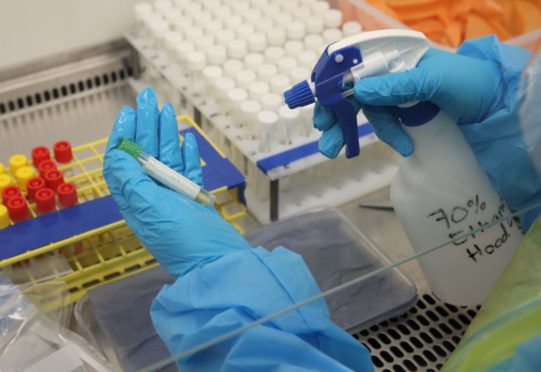Up to £2.6billion is expected to be wiped from the economy of the Highlands and Islands and Moray this year by the Covid-19 crisis, a new report has revealed.
Analysis for the north’s economic development agency concluded the region, where the number of people out of work leapt to 16,175 in the summer, has been “disproportionately impacted” by the pandemic, compared to Scotland and the UK.
The Highlands and Islands Enterprise (HIE) report also predicted economic conditions in the area will recover more slowly, with a return to pre-crisis levels “unlikely until 2023 at the earliest”.
Yesterday, Martin Johnson, HIE’s interim director of strategy and regional economy, admitted, “the road to recovery is a long one,” for the region.
The researchers said the area was faring worse than others because it has a greater share of employment in sectors most affected by Covi-19, with tourism, creative industries and construction hardest hit.
It also has a higher proportion of self-employment and micro-businesses, with nine or less workers, than the Scottish average
They report estimated tourist spending would plummet by £370-£584million this year, contributing to a £1.5-£2.6bn plunge in gross domestic product (GDP) in the HIE area, which includes Moray.
It also showed the region’s unemployment rate more than doubled in July, from the same time last year, rising to 5.7% from 2.4%. A leap in job losses between March and July was 23% above the Scottish rate, with Lochaber, Skye and Wester Ross and Argyll and the Islands worst hit.
A total of 72,300 workers in the area were furloughed between March and the end of June, which the researchers said suggested “a greater potential for redundancies as the furlough support ends”.
Self-employment income support was claimed by 18,300 people.
Mr Johnson said the report would “form part of the region’s voice, feeding into the national picture” and help inform HIE’s approach to supporting businesses and communities during the recovery.
He continued: “As anticipated, it shows the road to recovery is a long one. This underlines the need to collaborate and innovate, and to draw on the many strengths this region has.
“Natural assets such as the marine economy, for example, are expected to generate many new economic opportunities in relation to the green recovery and drive towards the net-zero targets. It’s crucial that businesses, communities, academic institutions and the public sector work together to make the most of these opportunities and rebuild our region’s economy.”
The analysis was carried out for HIE by consultants Context and Ekosgen.










